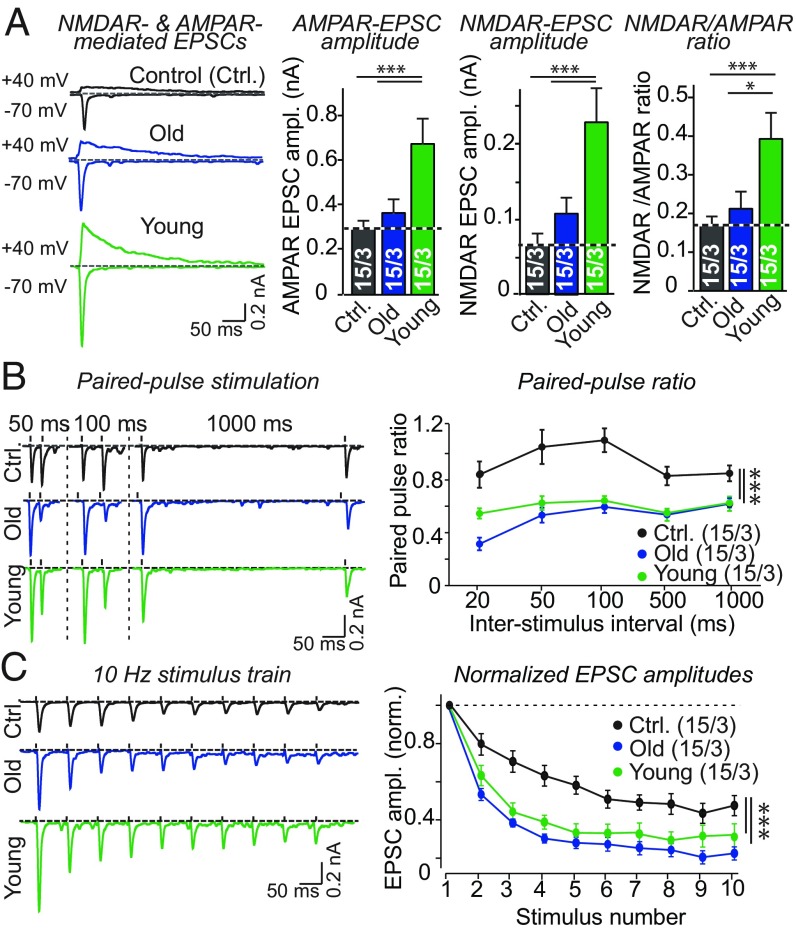Fig. 3.
Young but not old serum enhances evoked synaptic transmission and increases the NMDAR/AMPAR ratio, but young serum does not affect short-term synaptic plasticity. (A) Young but not old serum significantly increases the amplitudes of evoked AMPAR- and NMDAR-EPSCs and enhances the NMDAR/AMPAR ratio in human neurons (Left, representative traces of evoked AMPAR- and NMDAR-EPSCs monitored in control neurons or in old or young serum-treated neurons; Right, summary graphs of AMPAR- and NMDAR-EPSC amplitudes and of the NMDAR/AMPAR ratio calculated separately for each neuron). Sera were added at DIV10 and neurons were analyzed by DIV42 (for validation of the AMPAR- and NMDAR-EPSC measurements, see SI Appendix, Fig. S2 E and F). (B) Neurons treated with young or old serum exhibit a similar degree of paired-pulse depression of evoked AMPAR-EPSCs that is significantly lower than the paired-pulse depression observed in control neurons treated with FBS (Left, representative traces; Right, summary plot of paired-pulse ratios as a function of the interstimulus interval). (C) Neurons treated with young or old serum exhibit similar synaptic depression of evoked AMPAR-EPSCs during a 10-Hz stimulus train. Again, synaptic depression is significantly higher in FBS-treated control neurons than in neurons treated with mouse sera (Left, representative traces; Right, summary plot of the EPSC amplitudes normalized to the first response as a function of time during the stimulus train). All bar and line graphs show means ± SEM; numbers of cells per independent cultures analyzed are shown within the bars. Statistical significance (*P < 0.05; **P < 0.01; ***P < 0.001) was evaluated by one- or two-way ANOVAs and Tukey’s post hoc comparisons. Nonsignificant relations are not indicated.

